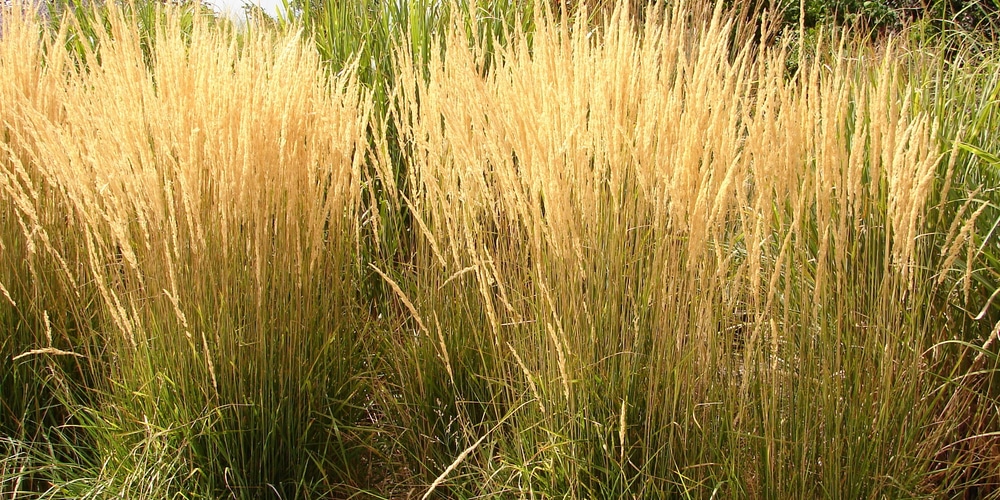Calamagrotis x acutiflora, also known as Karl Foerster Grass, is a type of grass that is a part of the poaceae plant family. Its most attractive feature is the gorgeous and dramatic green foliage that it possesses during the warmer seasons.
To take full advantage of this grass’ beauty you should put in effort to space it out properly. This procedure may sometimes be confusing and difficult. So here is everything you need to know about Karl Foerster Grass and its spacing.
Appearance and characteristics:
Karl Foerster Grass is a perennial grass, which means that it is likely to live for longer than two years if it is looked after properly.
In addition to this, its USDA Hardiness Zone is up to zone three and it is pretty adaptable in and to most locations.
Moreover, Karl Foerster Grass is a beautiful deep shade of green during its blooming season and a wheat-like color during the fall. The blooming period of this particular grass usually ranges from June to July.
Karl Foerster is a grass that can take up to anywhere from 2 to 5 years to reach its full mature height. When fully grown, Karl Forester Grass is usually in the range of 3 to 5 feet.
This grass is great to grow if you have a pet and/or child-friendly home as it is not known to be toxic to cats, dogs, horses, birds, people, or any other livestock in general.
Uses:
Karl Foerster Grass is most frequently used as a pairing with other plants and flowers. It is known to be best combined with more colorful and blooming perennials. Examples of plants that suit Karl Foerster Grass are Veitch’s Blue, Coreopsis, Liatris, and Echinacea.
When grown alongside other greenery, most people find that it looks beautifully surreal and soothing.
In addition to this, grown on its own, Karl Foerster is a grass that has been said to give gardens more of a vertical appeal.
That being said, this particular grass is great to use in any sort of greenery projects and arrays as it is complemented well by most other plants and thrives in almost any conditions.
How to take care of Karl Foerster Grass:
This grass prefers full exposure to the sun but it can handle partial shade.
Furthermore, Karl Foerster grass needs moist but well drained soil in order to properly flourish. It can also tolerate either acidic, neutral or even alkaline soil levels.
Karl Foerster is generally known to be a pest free grass but can sometimes be affected by slight rust during wetter periods. However, this rust tends to go away on its own once the moisture levels go back to normal.
It is recommended that you use a slow releasing and medium rated fertilizer to take care of Karl Foerster Grass.
You should water this plant once a month. It is preferable that you do not water more frequently than this as it could harm the grass and cause it to (yet again) rust.
Importance of Karl Foerster Grass spacing:
It is important that you pay thorough attention to the spacing of your Karl Foerster grass as otherwise, it might not grow as it should.
If you are looking to grow the grass on its own it is recommended that you leave a space of twenty four inches. This will give your grass a seamless look. If you want to plant other greenery and flowers in between the stems of the karl foerster grass, you should leave a space of thirty six inches.
Karl Foerster Grass spacing: Final Thoughts
Overall, Karl Foerster grass is a pretty low maintenance grass that almost anyone could easily take care of. This grass is likely to survive in any but the poorest soil types.
The most crucial part of caring for and looking after this plant comes during the seeding process, specifically the spacing.
This is because not being careful enough with how you space your Karl Foerster Grass could mean that you end up with undesired results such as an overflowing garden or grass stems that have grown too far apart to look normal.
Related Article: When to Stop Watering Grass in the Fall?
